Pakistanis make do in refugee camps
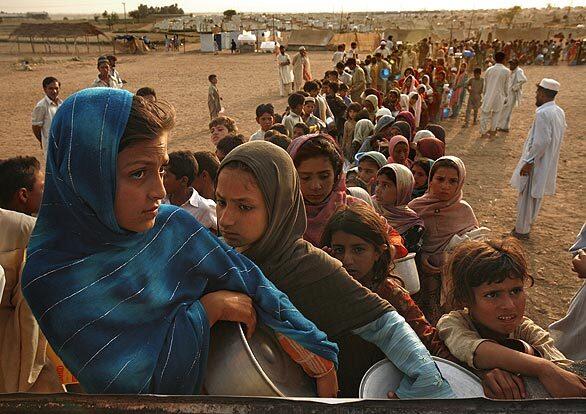
Taj Mina, 10, in blue scarf, and Mariam, in brown, line up for food at the refugee camp dubbed Little Lahore outside Swabi. Residents queue for hours for supplies in extreme heat, without water or electricity. (Carolyn Cole / Los Angeles Times)
More than 25,000 people have taken shelter from the fighting at the “Little Lahore” camp outside Swabi, near Swat. It is not clear when they can return to their homes, or when reconstruction of areas damaged in the military offensive will begin.
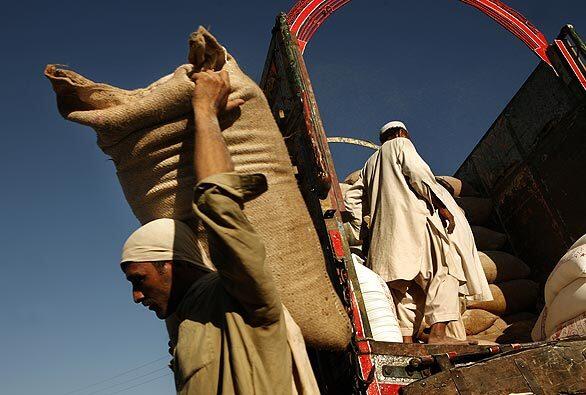
A private donation of wheat is unloaded at the Sheik Yaseen refugee camp in Mardan. Officials don’t know when it will be safe for civilians to return to the Swat Valley, where much of the infrastructure has been decimated. (Carolyn Cole / Los Angeles Times)
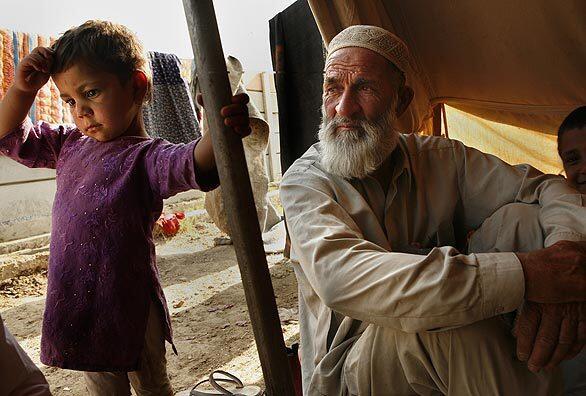
Nawab Khan, right, lives with 10 family members, including grandson Noor, in a single tent in the Sheik Yaseen camp in Mardan. They arrived from Dir, on the other side of Swat. An estimated 200,000 people are living in camps, and another 2.8 million have taken shelter with family and friends. (Carolyn Cole / Los Angeles Times)
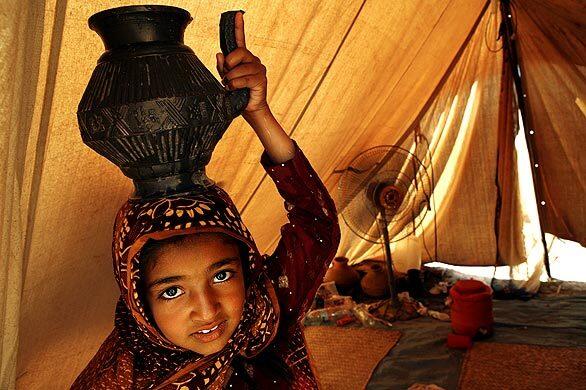
MARDAN, PAKISTAN--May 29, 2009--A young girl arrives at her family’s tent with a pot of tea from the camp kitchen. Thousands are living in the Sheik Yaseem refugee camp in Mardan. At least 2.4 million internally displaced persons (IDPs) have been registered as a result of the Pakistani military operations against the Taliban in western Pakistan. (Carolyn Cole / Los Angeles Times)
Advertisement
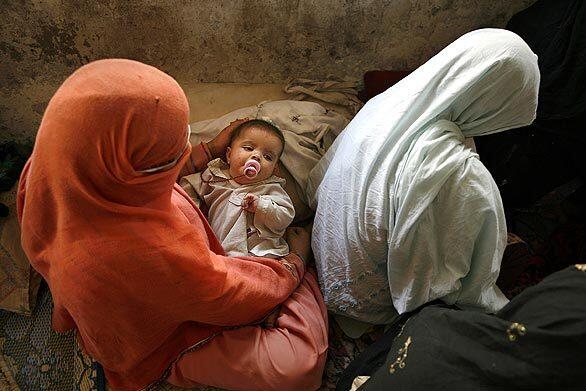
About 34 families, a total of 174 people, have taken refuge at the Gorman Primary School in Mardan and are dependent on help from private citizens. Women from the Swat area normally do not go out in public and prefer not to have their faces show. (Carolyn Cole / Los Angeles Times)
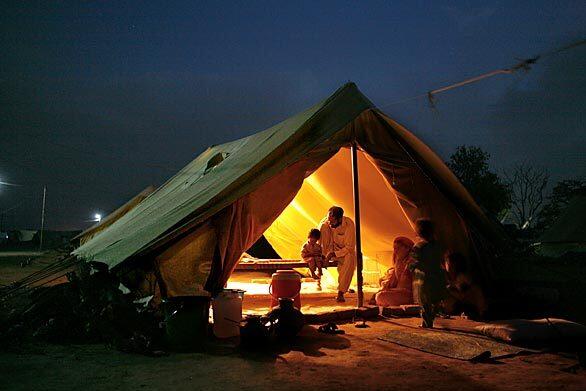
More than 25,000 Pakistanis are living in a refugee camp dubbed Chota Lahore Little Lahore outside of the town of Swabi, south of Swat. Very few of the tents have electricity in the camp. Officials estimate that 3 million people have been displaced by the military campaign against Pakistani Taliban in the Swat region. (Carolyn Cole / Los Angeles Times)
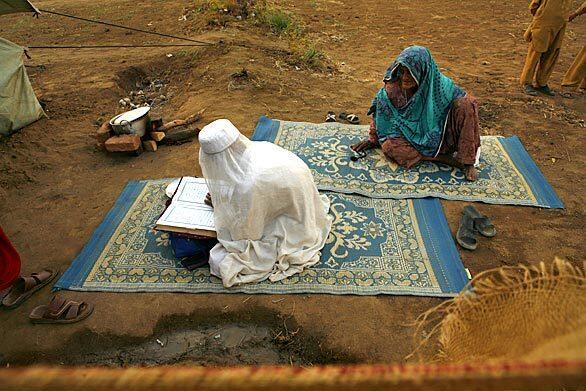
An elderly refugee, left, reads the Koran at the Little Lahore camp outside Swabi. U.S. envoy Richard Holbrooke, who Friday wrapped up a three day visit to Pakistan, praised the military offensive but said gains could be lasting only if Pakistan and the international community focuses on reconstruction, so the people displaced can return safely to the lives they led. (Carolyn Cole / Los Angeles Times)
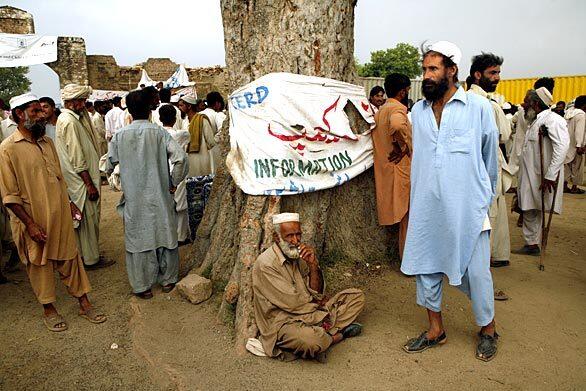
Men at the Little Lahore camp, desperate for cushioning from the hard ground, wait for donated mattresses to be handed out. U.N. High Commissioner for Refugees Antonio Guterres has estimated that reconstruction in Swat and nearby districts could cost $500 million to $1 billion. (Carolyn Cole / Los Angeles Times)
Advertisement
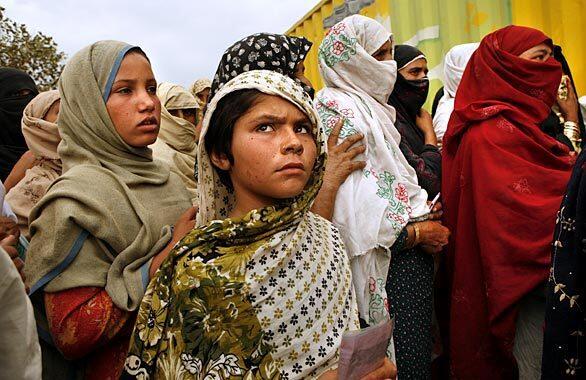
Women and girls wait for donated mattresses. Some donations arrived Friday, including matresses and fans, but chaos broke out and they couldn’t be handed out. Most of the displaced people have been sleeping on the ground since they arrived. (Carolyn Cole / Los Angeles Times)
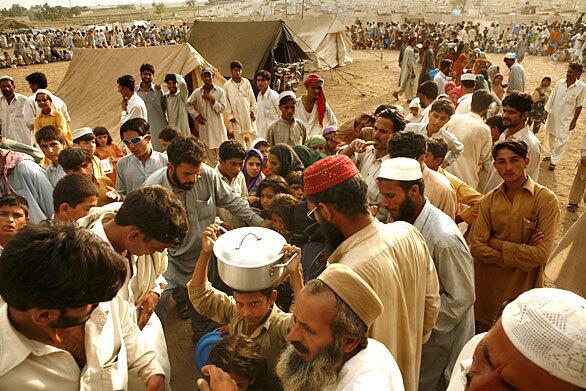
Residents of the Little Lahore camp line up for food handouts for hours several times a day. “Weve all seen refugee camps that start out as tent cities and harden into permanent towns and villages, said U.S. envoy Richard Holbrooke, urging swift aid to help people get back to their homes. (Carolyn Cole / Los Angeles Times)
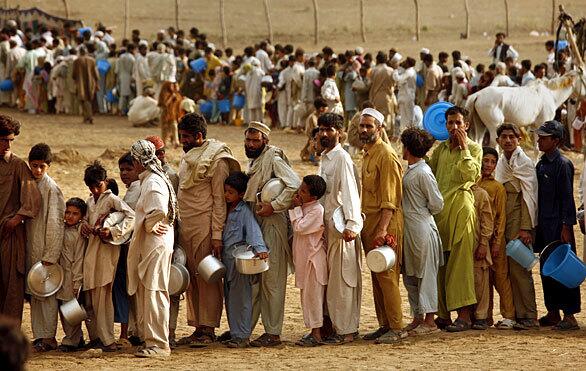
Some of the 25,000 displaced villagers at the Little Lahore camp queue for food. In Upper Dir, a district north of Swabi and adjacent to Swat, a suicide bomber struck during Friday prayers, killing 38 worshipers, including 14 children. (Carolyn Cole / Los Angeles Times)
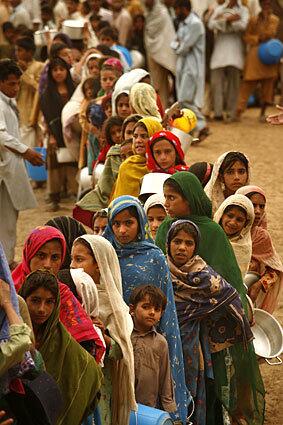
Women queue in a separate line for food at Little Lahore camp. “ The real test is how quickly the refugees will be able to get back to their homes, U.S. envoy Holbrooke said at a news conference in Islamabad. (Carolyn Cole / Los Angeles Times)
Advertisement
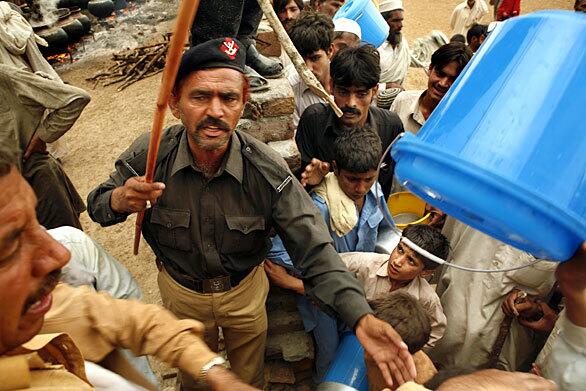
A security guard tries to keep order at the entrance to the Little Lahore camp kitchen. (Carolyn Cole / Los Angeles Times)
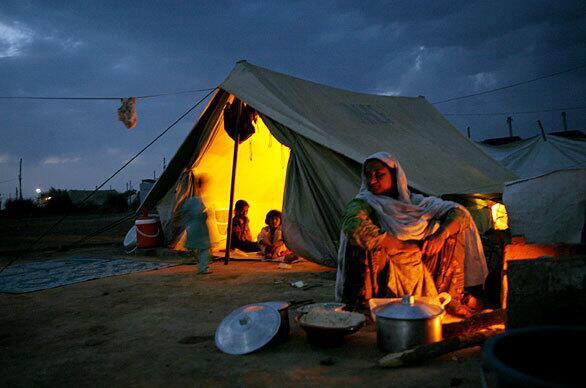
Camp resident Parveen, wife of Waheed Shah, makes chapatis, a flat bread, for her family. (Carolyn Cole / Los Angeles Times)
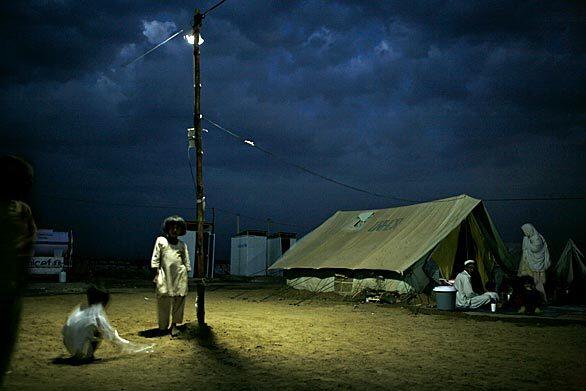
Only a few areas of the Little Lahore camp have electricity so far. U.S. envoy Holbrooke said on this trip he saw a population that fully grasps the gravity of the threat posed by Taliban militancy a dramatic shift, he said, from how people here used to view the issue. (Carolyn Cole / Los Angeles Times)







